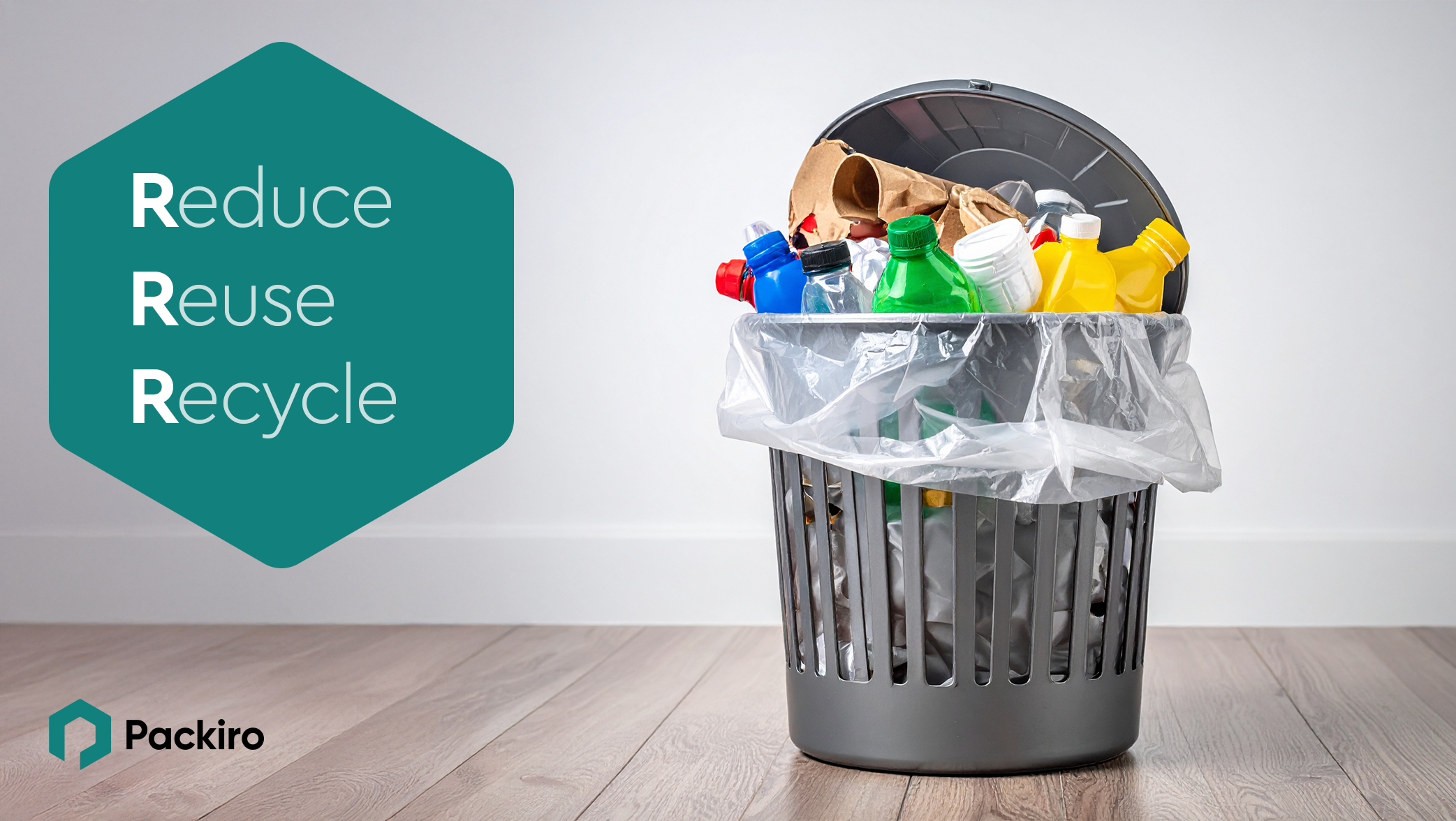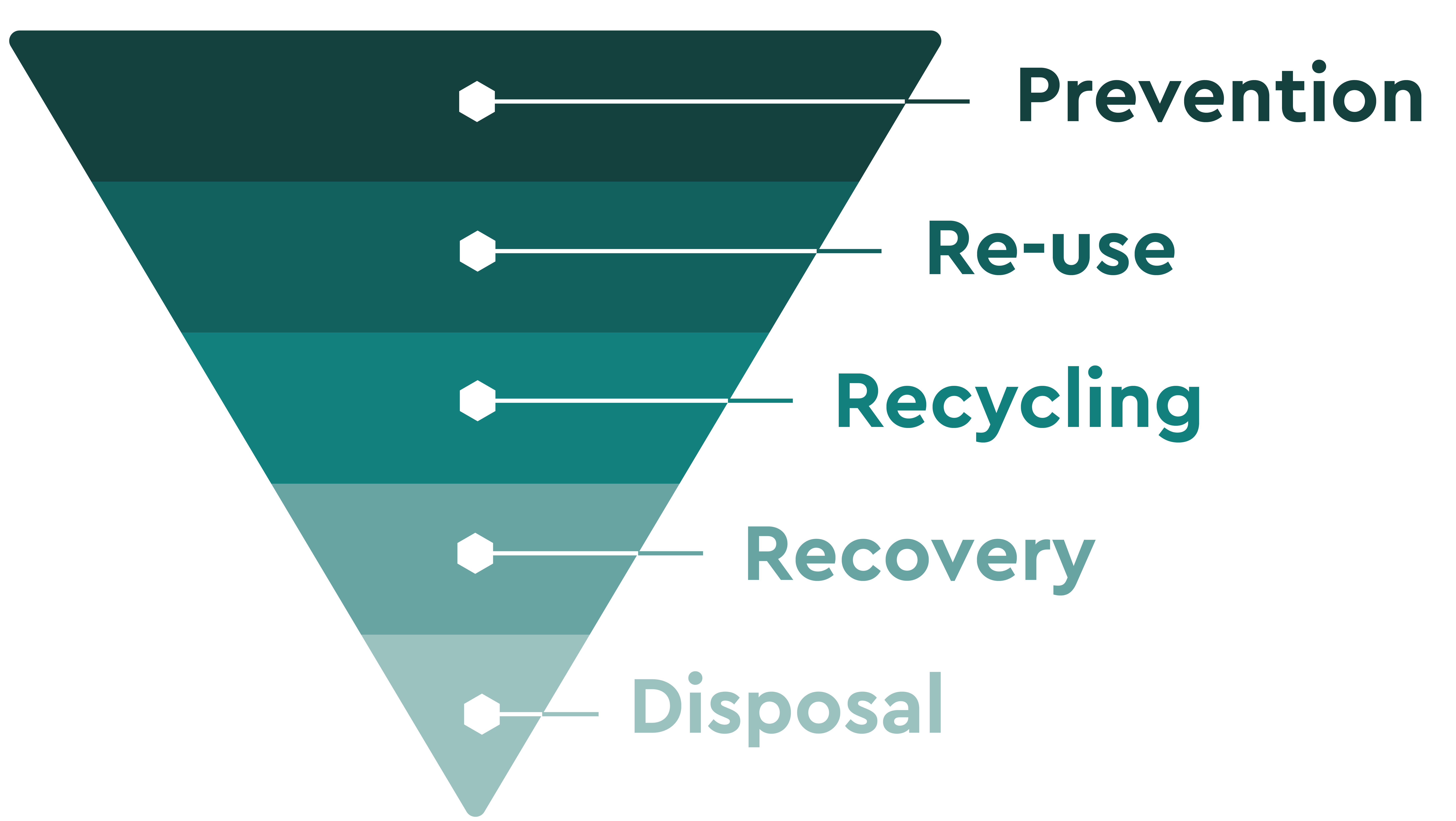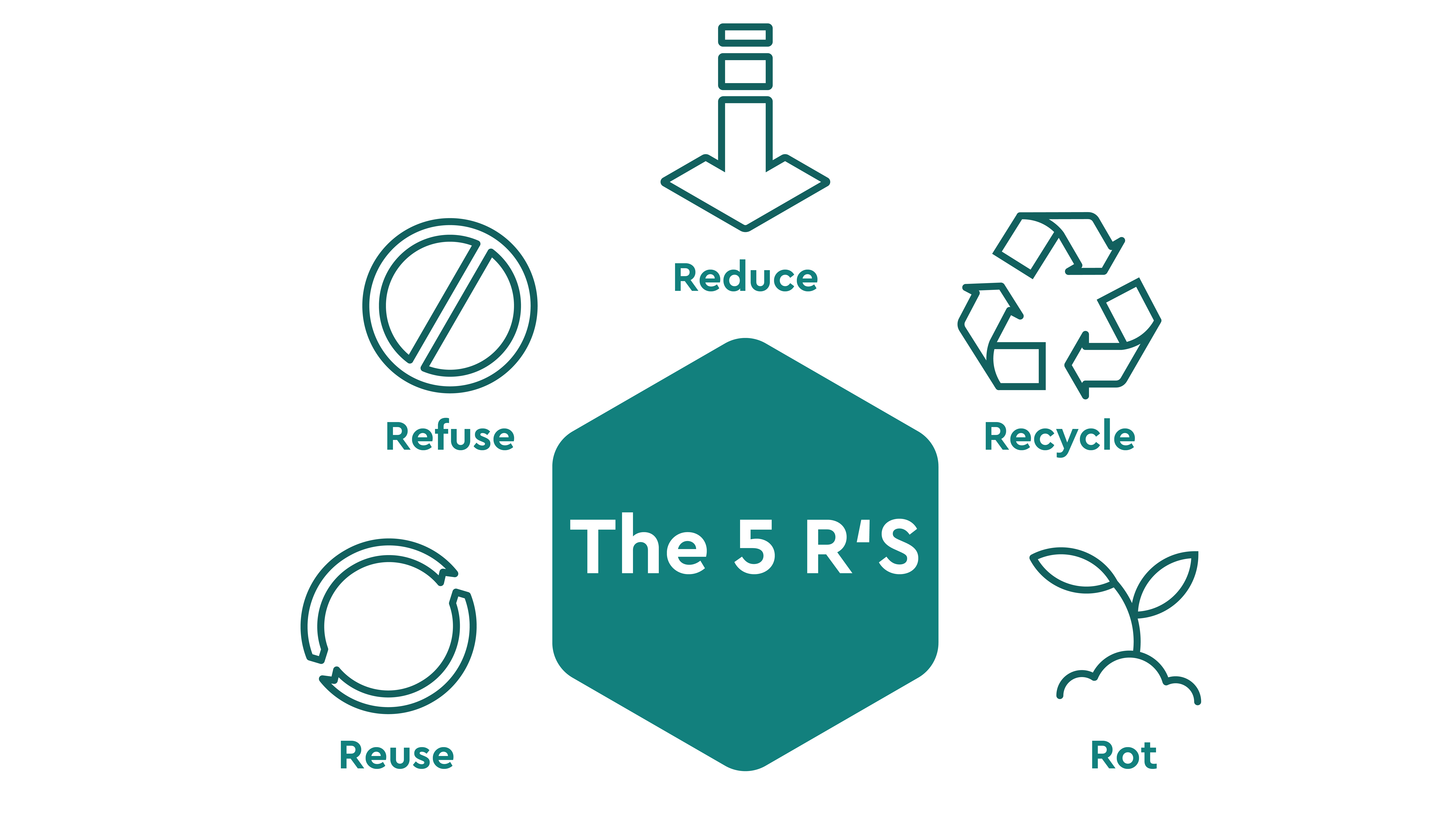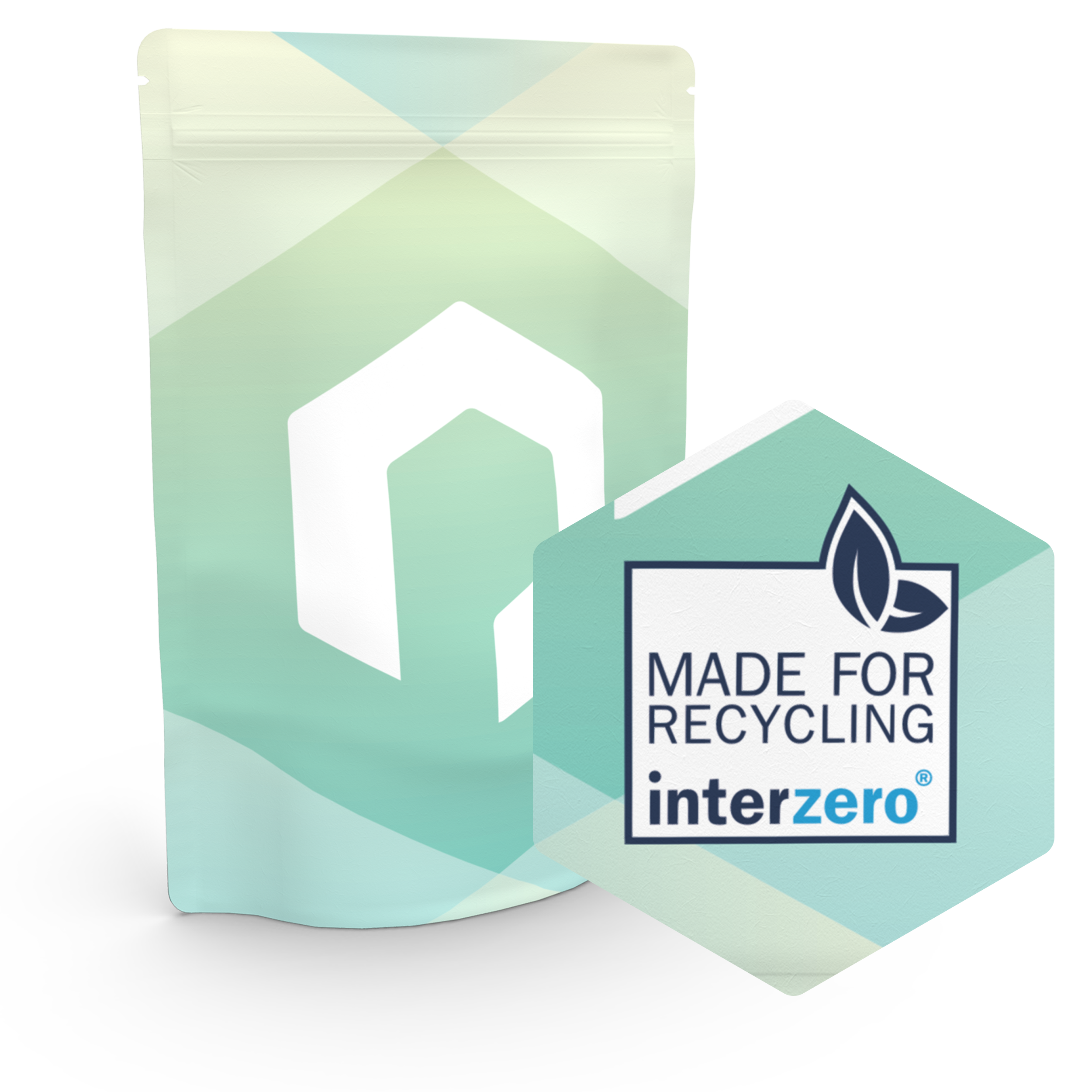
Reduce, Reuse, Recycle – The Three R’s (and Why There Are Actually Five)

Reduce, reuse, recycle – eco-friendly practices are trending. When trying to combine the best of both worlds in waste management – ecology and economy – things get complex, but not impossible. Enter the so-called 'waste hierarchy' and the 3 Rs. For many, these principles represent the gold standard of zero waste, but for businesses they are also legally binding. Keep reading to find out more about the principles of the 3Rs in the waste hierarchy and how your UK-based business needs to comply.
Created on 13.06.2025Content
Reduce, reuse, recycle
"Reduce, reuse, recycle" rings a bell, doesn't it? A motto we can all get behind, but what does it actually mean? Don't worry. Give us ten minutes of your time and you'll be able to not only talk the sustainability talk, but walk the walk - and sell your products more responsibly and sustainable in the future.
Defining the ‘Waste Hierarchy’
When it comes to sustainability, clarity of terminology is key. A lot of what you find online – even in some “reputable” media – tends to be vague or overly general.
Luckily, UK and EU environmental policies, inspired by Germany’s “Kreislaufwirtschaftsgesetz” (Circular Economy Act), offer a solid framework to follow: the Waste Hierarchy.
As the term already suggests, we are talking about a framework which prioritizes waste management. The hierarchy is based on the environmental impact and consists of five levels that rank from the most sustainable to the least sustainable action. After all, waste management is, at its core, about the prevention of waste or its most efficient reintroduction into the cycle.
The purpose of the waste hierarchy is to encourage a shift away from the traditional "take-make-dispose" model towards a more circular approach to resource use.
The waste hierarchy is often visualised as an inverted pyramid. At the top is waste prevention. Then comes preparation for reuse, followed by recycling. At the bottom: disposal.

According to the German Circular Economy Act – which inspired many EU and UK standards – the five tiers of waste management are:
Prevention
Preparation for reuse
Recycling
Other recovery (especially energy recovery or backfilling)
Disposal
The word “disposal” might conjure up images of mafia films or rubbish tips – fitting, really, since disposal is the least preferred option and the last resort in the hierarchy.
“Energy recovery” refers to incineration or other CO₂-intensive processes, while “disposal” usually means sending waste to landfill. These final two steps are to be avoided wherever possible. That leaves the top three – reduce, reuse, and recycle – aligning neatly with the three R’s.

Reduce: Zero waste Is Fantastic – If You Can Really Go Without
Refuse sits at the very top of the waste hierarchy and plays a critical role in reducing the environmental impact. It means actively avoiding unnecessary products or packaging—especially single-use items—before they even enter your home or business. “Refuse” is about saying no to things you’ll end up throwing away – like leaflets, samples, or unnecessary packaging.
By refusing packaging entirely, consumers and companies alike can drastically cut down on future waste. That is why in terms of sustainable waste management, the Refuse principle is the most important one out of the 5.
However, of course, in practice, refusing waste in today’s consumer-driven reality, renouncing packaging at all, is almost impossible as a business.
Zero waste living represents a noble idea. But let’s be real: packaging often plays a vital role – preserving freshness, extending shelf life, or enabling the product to be sold at all (especially when it comes to liquids). The “zero-packaging” ideal quickly reaches its limits here – especially in the food sector. Food safety as well as prolonging the shelf life of food products can only be achieved with appropriate packaging solutions.
This brings us to the second level of the waste management hierarchy.
Reduce – Less Is More
“Reduce” is the second tier in the waste hierarchy and focuses on minimising waste at the source. This involves designing products and packaging to use fewer materials, choosing durable, long-lasting goods and cutting down on consumption overall.
Reducing waste is the economic and environmental holy grail. Think of the slow fashion movement – “better one timeless coat than ten throwaways.” The recent repair culture fits in nicely here too.
That’s where our flexible pouches come in: perfect for direct consumption in smaller sizes or as large-scale refill packs. Each pouch replaces heavier, harder-to-recycle alternatives like plastic or glass containers. Many of those are multi-layered, composite and nearly impossible to recycle properly. Our lightweight mono-material packaging is already a big step toward meaningful and efficient reduction for SME businesses.
Reuse – Use Again (but Not Always)
“Reuse” comes next in the waste hierarchy and encourages giving products or packaging a second life before disposal or recycling.
It is a popular argument in the sustainability conversation – but only when it fits. Books, for instance, live long lives – from student scribbles to sandy beach reads. And clothing, electronics, and cars? They can all be repaired, passed on, or repurposed.
For technical, logistic and hygienic reasons, reusing packaging in the same way is not possible for food products. But instead of ending up in the trash, something new can be created. And that's what we're talking about:
Recycle – Closing the Loop
While the ‘Reuse’ concept focusses on extending the life of a product directly, the ‘Recycle’ principle is about transforming waste back into raw materials for new use.
Recycling is waste management’s ultimate challenge – not because it gets rid of waste so well, but because it keeps materials in the loop. Our pouches, whether small (for consumption) or large (for refill), are made of recyclable monoplastics and belong in your household recycling bin. They can be fully reprocessed and reintroduced into the materials cycle.
Find out more about the waste management and disposal of the Packiro packaging here.
When it comes to closing the loop with the aim of giving resources a second life, recyclable materials are often the more sustainable option compared to compostable ones – despite many beliefs that compostable materials present the better solution.
Compostable items are designed to break down into natural elements under specific conditions, ideally in industrial composting facilities, returning nutrients to the soil. Recyclable materials, on the other hand, are processed and reformed into new products, keeping valuable resources in circulation. While both reduce landfill waste, compostables support biological cycles, whereas recyclables strengthen the circular economy by minimising raw material extraction.
Unlike others in the industry who still struggle to separate labels and add-ons such as Zippers, our designs are printed directly onto the pouch surface. This makes them 100% recyclable by type – with no fiddly extra steps.
In short: whether it’s a handy snack pouch or a large-scale refill pack, our “made for recycling” certified solutions have real potential to shift the dial in waste management – and we’re just getting started.
Want to discover how plastic recycling actually works? Read our dedicated article on Plastic recycling.

Waste hierarchy in the UK
In 2008, the European Union set up the so-called EU Waste Framework Directive (Directive 2008/98/EC) that was based on the principle of the waste hierarchy and the 5 R’s.
Since then, UK businesses are legally bound to apply the waste hierarchy in priority order to minimise the environmental impact and focus on more sustainable practices.
At the time of Brexit, the United Kingdom transferred this regulation – among other EU regulations – to its national law. The Waste Regulations are still part of the UK's waste management framework, meaning that they remain to be legally binding for UK businesses.
Some deviations from the 5 R’s are possible if they result in even more sustainable outcomes. If UK businesses are not following those guidelines, the UK Environment Agency can issue fines (e.g. up to £5,000 for incorrect storing and securing of waste or unlimited fines when environmental offenses are taken to Crown Court).
The government is providing information on the application of the waste hierarchy for UK businesses. You can check their website for specific information and guidelines.
Implementation of the waste hierarchy and the 5 R’s for businesses
Businesses can follow the waste hierarchy guidelines by implementing practical measures to reduce, reuse, recycle, recover, and responsibly dispose of waste.
Here are some tips and ideas on how to implement the 5 R’s as SME:
Preventing Waste:
Conduct audits to identify sources of waste generation and opportunities for reduction (e.g. flexible packaging such as pouches require less material resources).
Optimise the inventory management
Prepare for Reuse:
Identify ways to reuse production materials from your products
Recycle:
Use fully recyclable mono-material packaging instead of composite materials (e.g. our certified “Transparent Toni” or “Metallised Martha” materials)
Recover Energy:
Explore options for converting waste into biofuels or energy recovery systems
Dispose Responsibly:
Work with licensed waste carriers and ensure disposal
Inform your customers about the correct disposal of the packaging (e.g. by using recycling codes)
Conclusion: Reduce, Reuse, Recycle
“Reduce, reuse, recycle” might roll off the tongue, but it deserves to be used with intention – and accuracy. Doing so makes all of us more transparent and trustworthy in the long run.
By following the waste hierarchy, businesses can reduce their environmental impact, comply with legal requirements, and potentially save money through more efficient resource use.
That’s why at Packiro, we offer sustainable packaging solutions – as sustainable as possible, at least. We won’t promise “100% eco-friendly packaging” just yet. But “as sustainable as possible” is what drives us forward – pushing closer and closer to truly circular solutions.
In the world of liquid packaging, that means made to reduce, ideal to refill, ready to recycle. And you can proudly display the “Made for Recycling” seal on your Packiro pouches for your customers to see.
Sounds brilliant, doesn’t it?